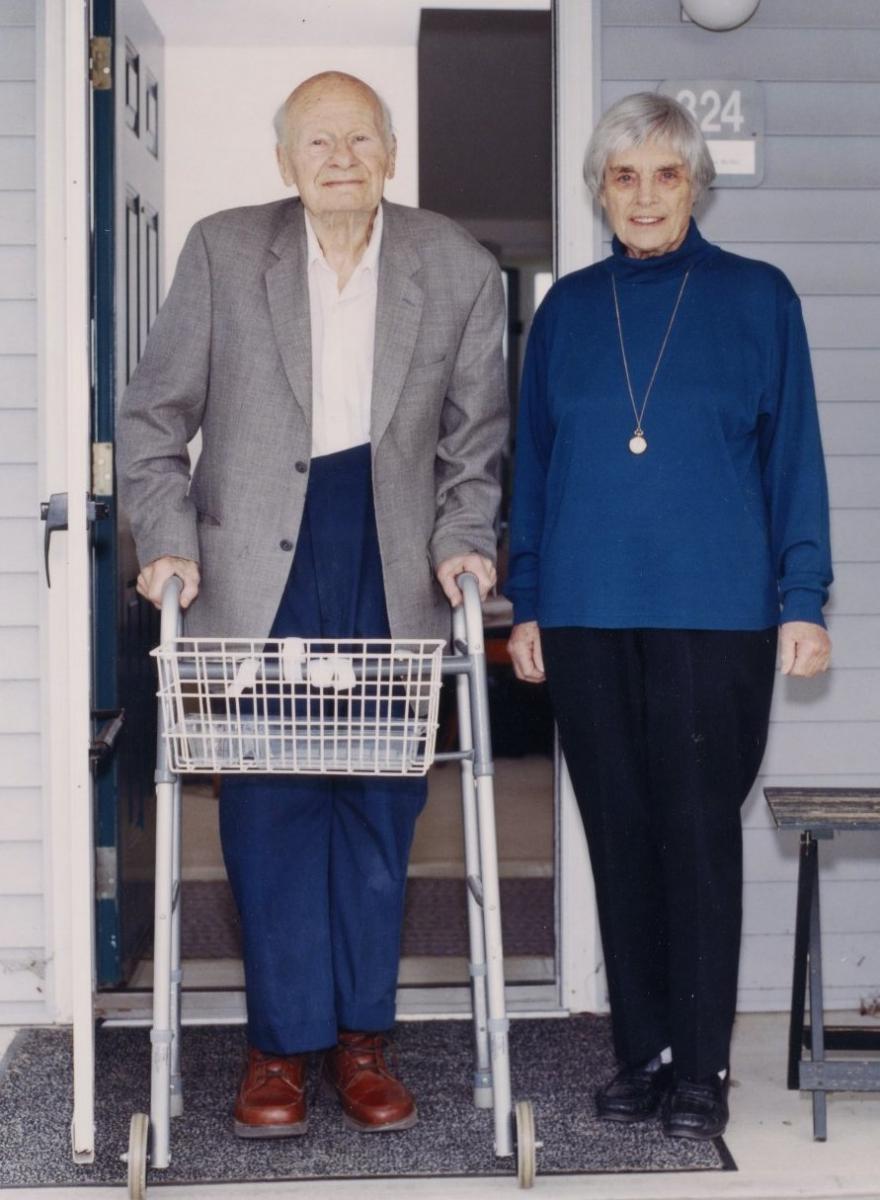Two of the most recognizable figures at Los Alamos during the Manhattan Project were Hans and Rose Bethe. Hans Bethe and Rose Ewald both fled Nazi Germany during Hitler’s rise to power and arrived in the United States in 1935. Hans, who would later go on to win the 1967 Nobel Prize in Physics for his work on the production of energy in stars, was selected by J. Robert Oppenheimer to lead the prestigious Theoretical Division at Los Alamos.
Rose, the daughter of physicist Paul Ewald in Stuttgart, first met Hans as a teenager in Germany. Rose, who was ten years younger than Hans, put off marriage until September 1939 and moved to Ithaca where Hans was on the Cornell faculty. In March 1943, Rose joined her husband at Los Alamos, where she worked briefly in the housing office assisting incoming scientists and their families with their living arrangements.
Now, for the first time, you can listen to Hans and Rose share their reflections on Los Alamos and the Cold War in two interviews on AHF’s Voices of the Manhattan Project website. The Bethes discuss a number of interesting topics, including secrecy, espionage, and life on the Hill.
Hans and Rose recall social gatherings at the Oppenheimers’ home but preferred long hikes: “The main social life took place on Sunday for us because we always went for long walks…we drove as far as across the valley up into the Rio Grande and walked from there. It was lovely. It was interesting and entertaining, and the views of course are magnificent no matter where you go as soon as you get out in the open. It is just marvelous.”
Hans and Rose also discuss their relationship with Edward and Mici Teller, with whom they shared many “good times” before and during their days at Los Alamos. According to Rose, “The split came when Edward insisted on the hydrogen bomb and insisted that America needed to develop it.” Though Hans eventually worked on the “Super,” he hoped that his research would prove that it was impossible to create.

According to Hans, his contribution to the hydrogen bomb project was rather insignificant: “I did very little. I think my main contribution was that I said in one of the meetings that one-inch is 2.54 centimeters, not 2.5. The engineers had gotten themselves all tied up by using 2.5, so the centimeter dimensions and the inch dimensions just never would agree. So, I solved that problem.”
When the United States successfully detonated its first thermonuclear weapon in November 1952, Hans and Edward decided to go their own separate ways. Teller advocated for larger and larger thermonuclear weapons; Bethe became a champion of nuclear disarmament. They still “had a fondness for each other afterwards,” recalls Rose, “but they couldn’t talk to each other because they would immediately come to the split in ideology. It was sad.”
When Hans learned that Teller was planning to testify against Oppenheimer at the Atomic Energy Commission’s security clearance hearing in 1954, Hans tried to change his friend’s mind. “We were in Washington for the meeting of the American Physical Society at the same time the testimony went on,” recalls Hans, “and I was going to testify in favor of Oppenheimer. We tried to persuade Teller to do the same, or otherwise just not testify. There was no chance he would do that. He said, ‘Oppenheimer has made so many mistakes.’”
After the war, Hans returned to teaching physics at Cornell while Rose focused on raising the couple’s two children, Henry and Monica. For their reflections on Los Alamos and much more, listen to the lively interview of Hans Bethe that Richard Rhodes took in 1993 and the wonderful interview with Rose Bethe taken in 2014.





